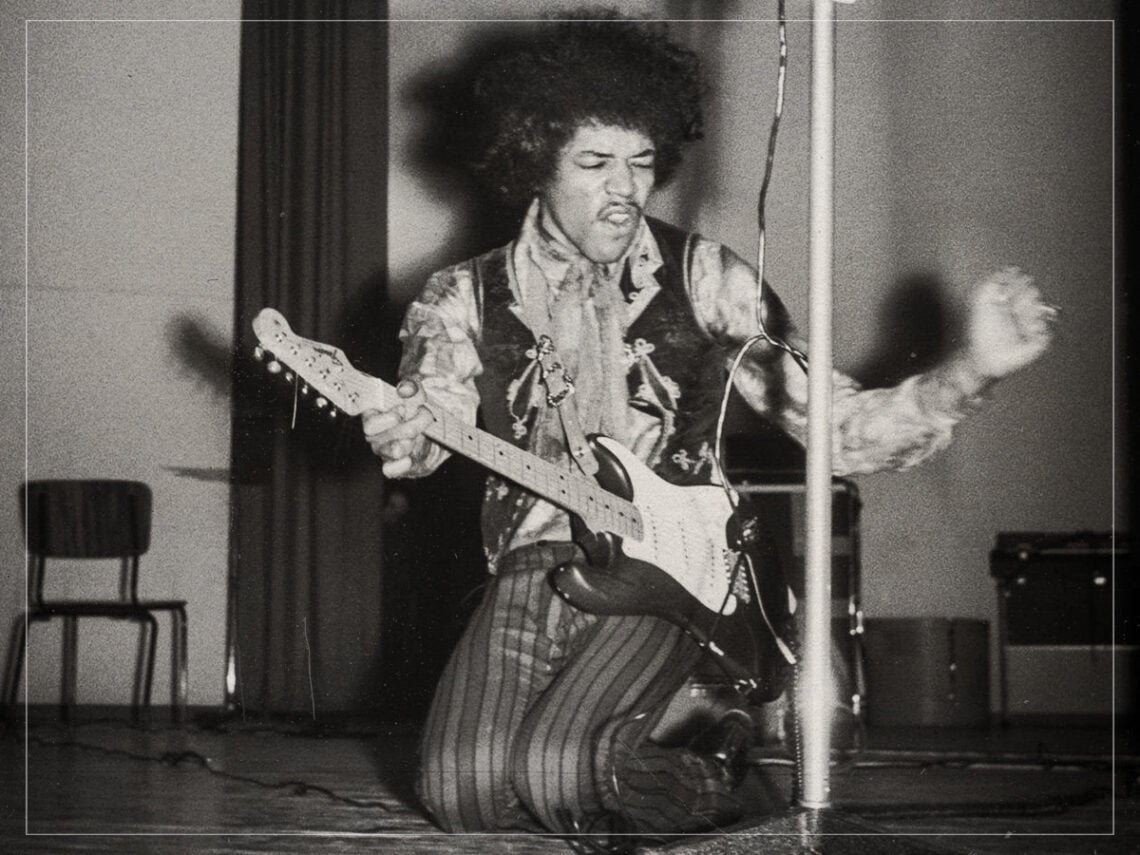
(Credits: Far Out / Marjut Valakivi / Public Domain)
Thu 16 October 2025 23:06, UK
No true rock and roll devotee enters into the music industry with a head full of profit margins, lengthy contracts, or royalty cheques. Particularly during the counterculture boom of the 1960s, the rock landscape was awash with revolutionaries ready to tear down the musical establishment for their own enjoyment, and Jimi Hendrix was their enigmatic leader.
Anybody who has ever picked up a guitar owes something – even if that thing is simply increased levels of envy – to the work of Jimi Hendrix. After escaping the apple pie conservatism of his native United States and in search of the vibrancy of Carnaby Street, Hendrix blazed a trail that virtually every subsequent rock guitarist would follow, crafting an otherworldly psychedelic sound which he simultaneously managed to make look effortless. However, his six-stringed skills were merely one part of Hendrix’s revolutionary appeal.
After all, there were a lot of great guitar players walking the swinging streets of London during Hendrix’s tenure, ranging from the blues-rooted mastery of Keith Richards right through to the psychedelia of Jeff Beck or Eric Clapton. Where Hendrix differed – aside from the quality of his playing – was in his seemingly tireless artistic drive. With every recording session, live performance, or private jam, the guitarist seemed determined to further his rock and roll exploration, boldly going where nobody had done before.
With those unshakable principles of innovation and exploration, Hendrix wasn’t much interested in the ideals of any record company. After all, record companies exist to generate revenue for their owners and executives, and Hendrix wasn’t exactly opting for the pop-centric sounds that were filling the singles charts and lining executives’ pockets. Nobody had ever heard a record like Are You Experienced or Electric Ladyland before, and his label, Polydor, were taking an admitted monetary risk by putting those psychedelic masterpieces out into the world.
That risk paid off, of course, and Hendrix made a lot of record company workers very rich, but that outcome only came after a lot of compromises on the guitarist’s part, particularly when it came to his 1966 single, ‘Hey Joe’. As well as being one of Hendrix’s defining anthems, it also earned the guitarist a number six single in the charts, but, behind the scenes, Hendrix never wanted to release that particular track as an A-side.
As Hendrix’s fellow guitar hero and close comrade Eric Clapton told Guitar World in 2008, ‘Stone Free’ was the artist’s chosen A-side. “Well, the thing with ‘Stone Free’ is that when Jimi first played it to me, he told me that it was the one he wanted as the A-side instead of ‘Hey Joe,’ he recalled. “To me, it was better than ‘Hey Joe.’ When I heard ‘Stone Free,’ it blew my fucking mind! And I thought, ‘They’re going to put ‘Hey Joe; out because it’s commercial,’ but he wanted ‘Stone Free.’”
In fairness to Polydor, it is easy to see why they ended up putting out ‘Hey Joe’ as the A-side and resigned ‘Stone Free’ to the flip. For starters, ‘Hey Joe’ is an utterly incredible tune, which in many ways summarised the core appeal of Hendrix as a performer and guitarist. What’s more, ‘Stone Free’ has some not-so-subtle overtones of illicit substances, which were already causing tabloid pandemonium back in 1966, so to put it out as the plug side would have risked a lot of unwanted attention both on Hendrix and Polydor.
Nevertheless, ‘Stone Free’ remains one of Hendrix’s most mind-blowing tracks, both in the mind of Eric Clapton and of everybody who has ever truly listened to its expansive psychedelic mastery. Even though the song didn’t, as Hendrix had intended, end up as an A-side single, it is difficult to imagine the guitarist losing much sleep over the matter, or paying much heed to the ebbs and flows of the singles chart at all.
Related Topics

